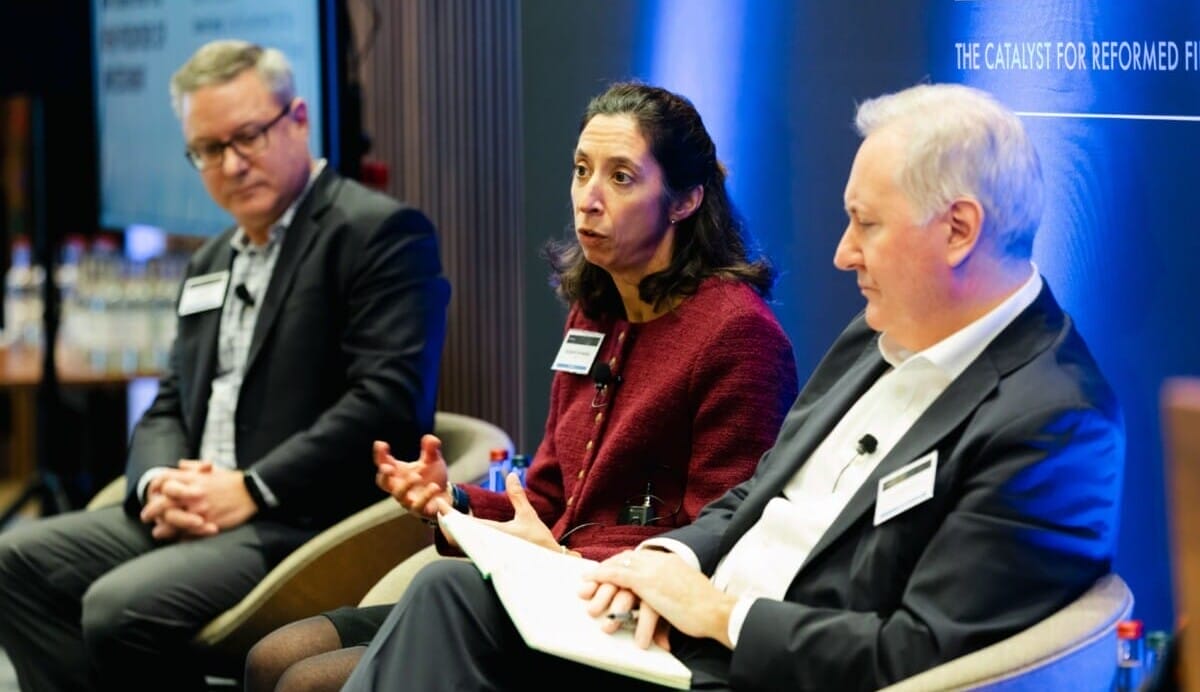Asset allocators are seeking new ways to optimise portfolios beyond using the historic mean variance tools in the face of higher and more volatile inflation expectations.
At the Fiduciary Investors Symposium at Oxford University, a panel of top UK and US fund investment heads said breaking away from established practices – such as moving from strategic asset allocation to a total portfolio approach – is often a challenging task, but a new context demands modern investment frameworks.
Elizabeth Fernando, chief investment officer of the £55 billion NEST said investors haven’t invested in an environment of high inflation, interest rates and bond yields for a long time.
“One of the things that worries me is – if we’re building portfolios using historic mean variance optimisation tools – we’re in a very different regime to the one we’ve been in for the last 20 years,” she told the symposium.
“If you’re relying on backwards-looking models, I would be concerned that you’re anchoring to the wrong things.”
NEST, which is the biggest defined contribution fund in the UK, instead employs a form of TPA through which it looks for “incremental assets” that can improve the probability of meeting its various portfolio-level objectives.
“What matters in terms of risk is very different between those, so it brings a very nice clarity to your decision making – it becomes very obvious when something no longer fits there,” Fernando said.
“[It also helps with] decisions that previously would have been quite difficult to make because it’s risky against an SAA or reference portfolio.”
Joe McDonnell, chief investment officer of Border to Coast, which is one of the Local Government Pension Scheme pools, said if forward-looking inflation leans towards the higher end of 3 per cent rather than 2 per cent, then investors would have a significant problem.
“If you have 3 per cent inflation, there is one asset class that will save you and that’s commodities – nothing else does. Commodities is a difficult asset class for most of the asset owners, and I don’t see them holding 15 to 20 per cent in commodities,” he said.
McDonnell suggested that asset allocators examine the level of inflation beta they have in their portfolios.
“What you really want is an asset class that actually ticks along quite nicely, but if there is an inflation problem, it has a positive beta around that,” he said.
“If we do have a 3 per cent [inflation], the correlation benefits or diversification benefits of bonds/equities breaks down, and does not recover. If you don’t hold a broad set of commodities, you have a problem, which means the majority of us will have a problem. So we need inflation controlled.”
David Veal, chief investment officer of the Employees Retirement System of Texas echoed that there is a “fiduciary case” for investing in gold even though the fund traditionally hasn’t had an allocation. While it doesn’t generate income, the price increase of gold has been strong.
The fund is also looking to real assets to as a line of defence in a high inflationary environment, working with many European managers to explore infrastructure opportunities.
Border to Coast’s McDonnell added that UK private markets will benefit from the government’s push to invest more locally but a lot of the capital would likely come from the domestic listed markets, which have suffered a long period of underperformance.
“Obviously you have the flow to passive management, active management clearly hasn’t worked. What you’re basically going to see is institutional investors who are investing UK will jump over the public market and more focused on the private market,” he said.
“Not saying that’s a good thing. I’m just saying that’s what’s going to happen.”


